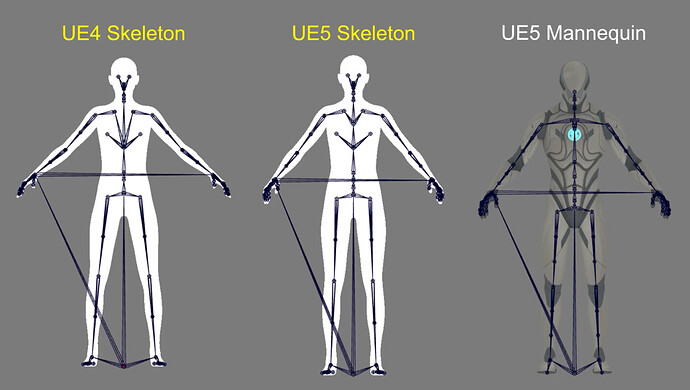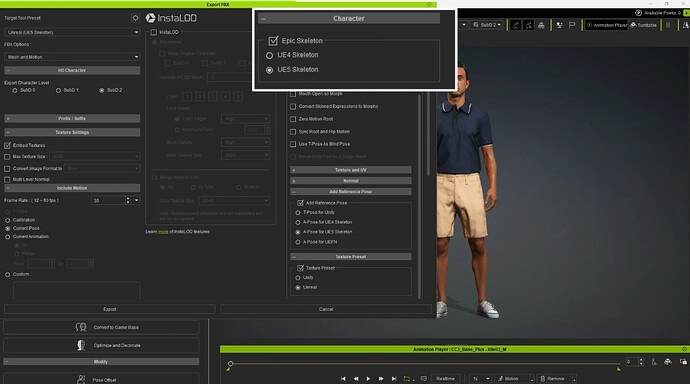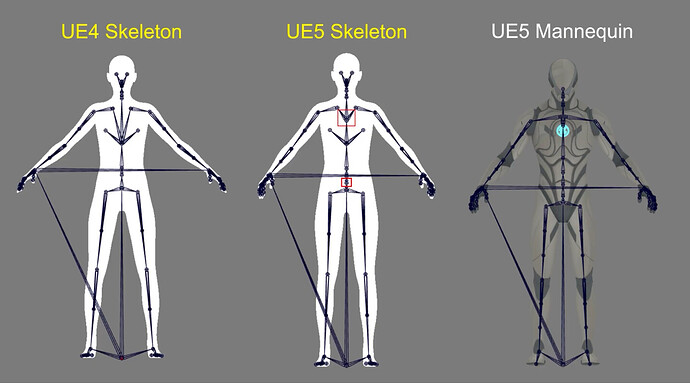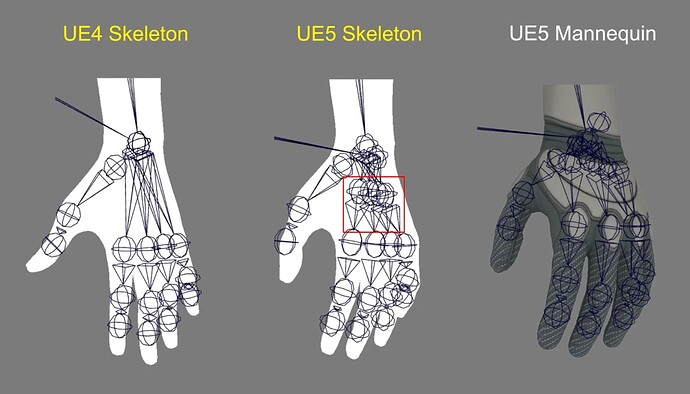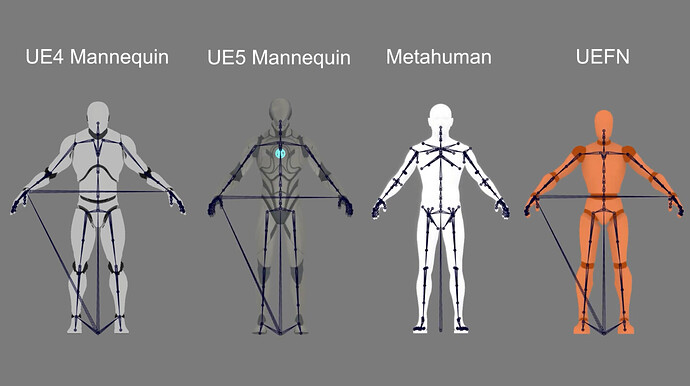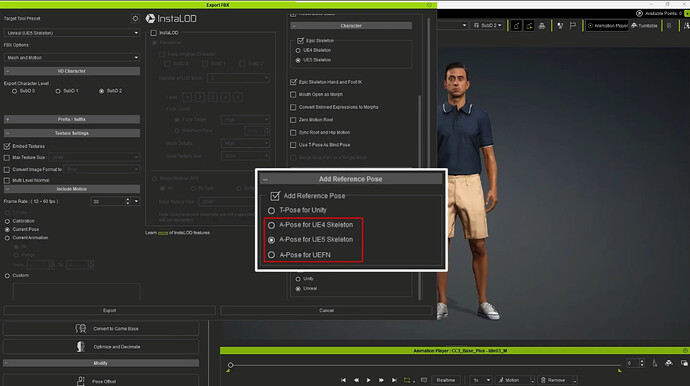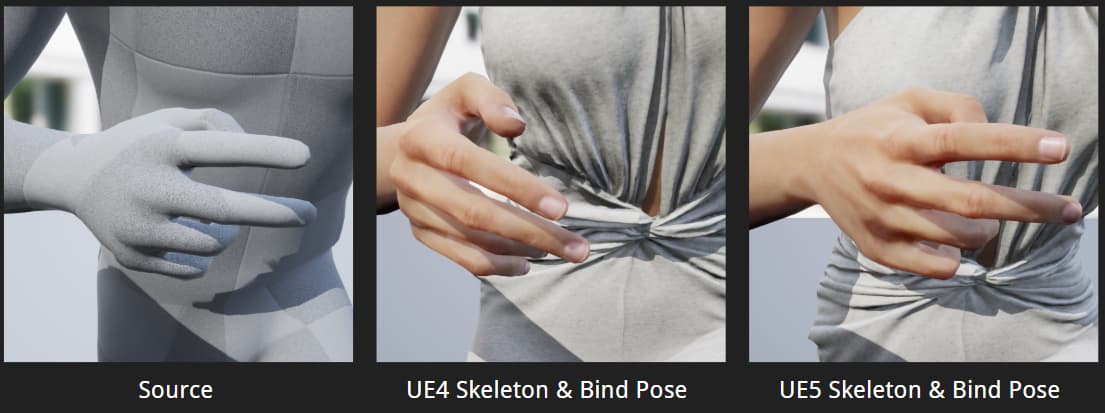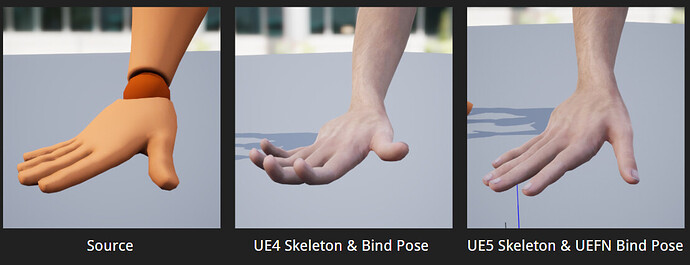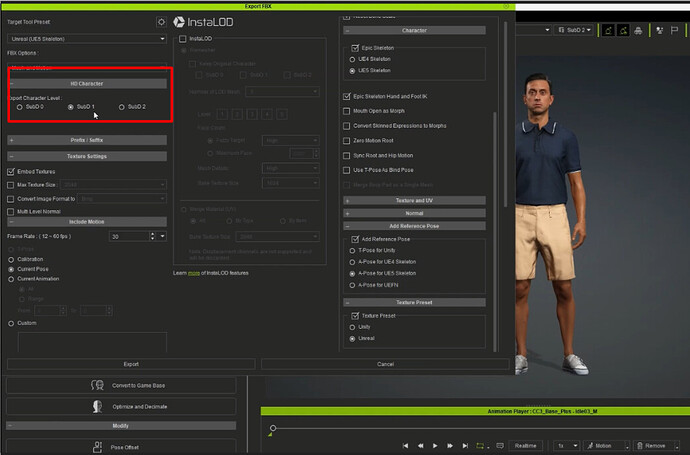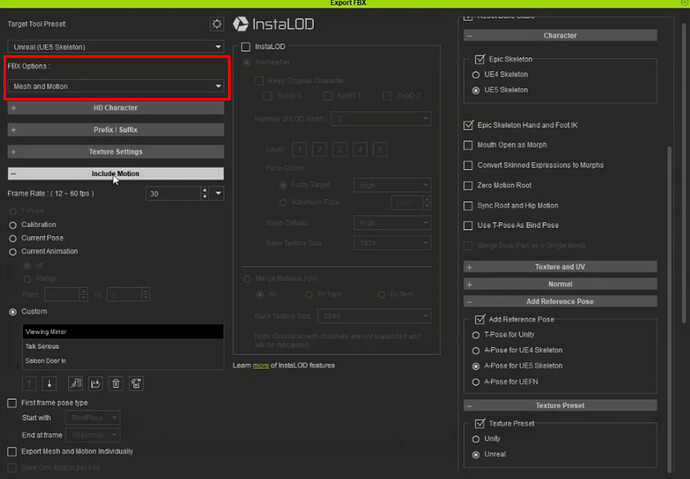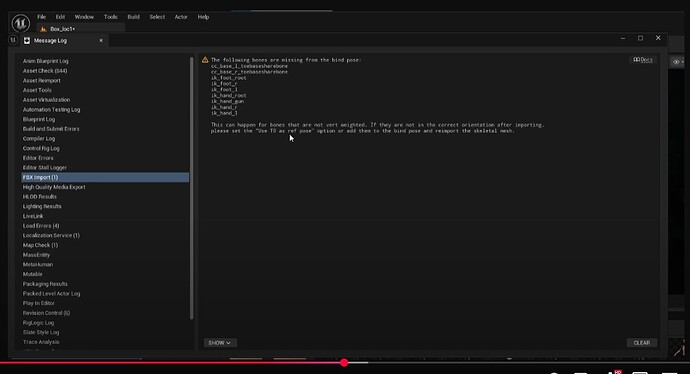If you’re working with Unreal Engine 5, CC5 and CC4.6 now offers a much more streamlined export process with new presets, bind pose options, and mesh flexibility—designed to eliminate retargeting headaches and speed up your pipeline.
Let’s walk through what’s new and how to export cleanly from CC to Unreal.
1. New UE5 Mannequin Preset
In the past, we only offered a preset for the UE4 Mannequin.
With CC5, we’ve added a dedicated UE5 Mannequin Preset, fully aligned with the latest Unreal skeleton structure.
This new preset includes 10 additional key bones, including extra spine and hand bones, designed to match the latest UE5 Mannequin and MetaHuman rig—leading to better motion compatibility and smoother facial/hand animations.
2. Three Bind Poses for Better Compatibility
When exporting, you can now choose from three different bind poses, matching various Unreal character types:
| Bind Pose Option | Use Case |
|---|---|
| A-Pose for UE4 Skeleton | UE4 Mannequin (legacy) |
| A-Pose for UE5 Skeleton | UE5 Mannequin, MetaHuman |
| Embedded A-Pose for UEFN | Fortnite / UEFN sample characters |
This is a brand-new feature in CC5—no more one-pose-fits-all limitations. Choosing the right pose ensures animations retarget correctly without distortion or finger drift.
![]() The following videos are paired with side-by-side screenshots so you can compare skeleton differences clearly—from spine bone count to finger joint layout.
The following videos are paired with side-by-side screenshots so you can compare skeleton differences clearly—from spine bone count to finger joint layout.
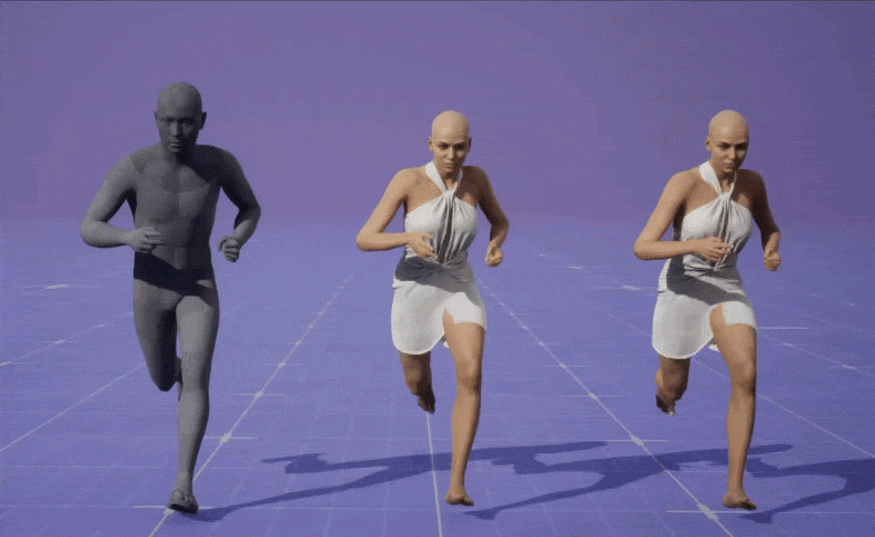
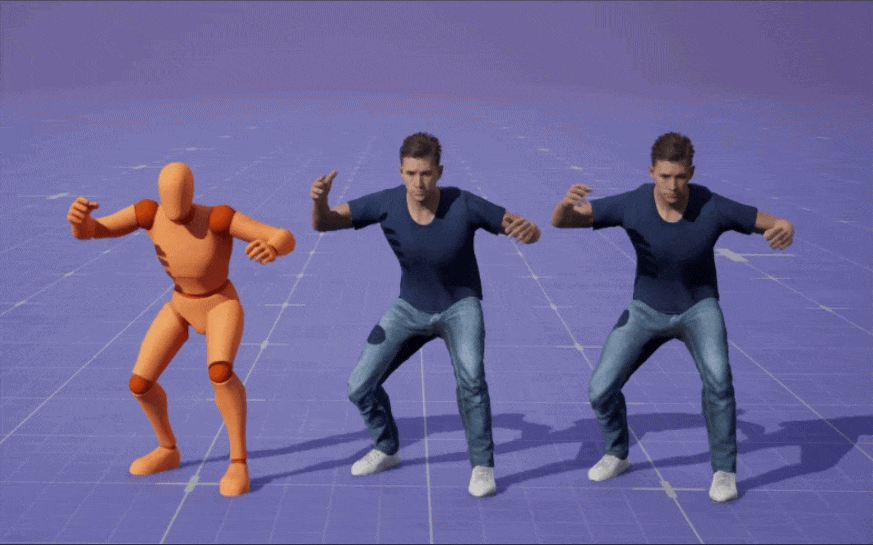
Based on the video and screenshots above, the most noticeable difference lies in the fingers.
With the updated UE5 skeleton and matching bind pose, your CC character can achieve near 100% accuracy when retargeting motions from the source—especially for detailed hand and finger animations.
3. Subdivision Export Options for Performance vs Fidelity
With CC5’s new Subdivision Mesh system, you can now export different resolution levels directly from the FBX export menu:
- Lv0 – Lightweight, game-ready mesh
- Lv1 – Balanced detail for rigging and preview
- Lv2 – Full HD detail for sculpting or cinematic rendering
This lets you adjust mesh resolution per export target—great for teams working across games and film pipelines.
We recommend to select SubD1—this offers a great balance between performance and visual fidelity.
4. Export Characters and Motions Together
In CC4, exporting a character and animation meant two separate exports.
Now in CC5, you can export both mesh and selected motion clips together in one go.
Next up: we’ll walk through the import process into Unreal, and how CC5’s Auto Setup does the heavy lifting for shader setup and skeleton compatibility.

